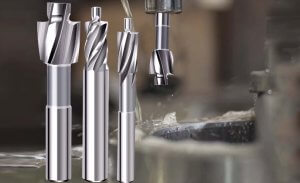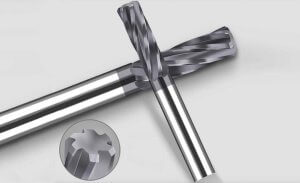Introduction: Understanding Aluminum and Brass Machinability
In the manufacturing world, two materials prominently used are aluminum and brass. Both bear unique traits that make them suitable for different applications. Notably, aluminum is renowned for its lightweight yet robust nature which enables it to maintain structural integrity under strain. Conversely, brass stands out due to its impressive resistance to corrosion alongside high thermal conductivity. Yet, when selecting a material in manufacturing, one paramount factor to consider would be their ‘machinability’. Essentially, machinability is a concept that points to how easily a material may yield to machining processes such as drilling or cutting.
- Therefore, highly machinable materials exhibit great efficiency in terms of tool wear, power consumption, and surface finish.
- Machinability can directly impact production costs, time, and quality of products, hence defining the ultimate value of any given material.
Overview of Aluminum
Renowned for its unique characteristics, aluminum is one of the most versatile materials available. In terms of physical properties, this lightweight yet strong metal exhibits high resistance to corrosion and excellent thermal and electrical conductivity. While it’s inclined towards malleability, this characteristic doesn’t compromise on durability or stiffness as observed in metals with comparable density.
The range of industries that find immense utility from aluminum is wide and varied. Notably used in manufacturing, transportation, packaging, construction, electronics among other sectors, aluminum’s distinct properties enable customizable applications. For instance,
- In manufacturing – It’s utilized extensively due to its ability to withstand high temperatures, making it ideal for products like cookware or automotive components.
- In transportation – Its significant strength-to-weight ratio provides an optimal solution for crafting both lighter and more efficient vehicles.
- In Construction – The material’s resilience against rusting paired with an aesthetic appeal makes it a preferred choice in designing robust architectures.
To sum up, aluminum being inherently recyclable also contributes to sustainable practices across diverse sectors thus enhancing its relevance in today’s industrial landscape>.
Machinability of Aluminum: An In-depth Look
When delving into the machinability of aluminum, it’s essential to consider its versatility, ease of machining, and suitability for various applications. Aluminum’s machinability makes it a preferred choice for a wide range of CNC machining projects, offering excellent precision and surface finish. For precision machining needs, consider Precision Machining Service to ensure top-notch quality and accuracy.
Overview of Brass
The base properties of brass are dictated by its formulation, commonly a blend of copper and zinc. Its strength tends to vary based on the balance of these two elements; yet generally, it offers good tensile strength, outstanding corrosion resistance, and significant ductility which stands beneficial for machining operations. The unique attribute that sets apart this alloy is its low friction trait.
In the manufacturing context, the advantageous qualities of brass see it often employed in a variety of applications. For example:
- Its high thermal conductivity allows its use in heat exchangers and radiators,
- Due to enhanced malleability, it suits well for forming intricate shapes such as gears or locks,
- Additionally, owing to its rich aesthetic appeal, it’s prevalent in decorative accessories and musical instruments.
All these attributes make brass an attractive material for machinists and manufacturers alike.
Machinability of Brass
The machinability rate of brass is significantly high, thanks to its unique properties. This makes it a preferred material in various machining processes. The attractive features that enhance brass’ performance under this domain include heat resistance and superior strength. It also has good corrosive-resistant properties, ensuring durability and longevity of the parts manufactured.
This impressive performance enjoyed by the companies dealing with brass manufacturing stems from two specific procedures: milling and turning. Machining brass using these methods proves cost-effective and efficient as they result in minimal waste production and increased component precision. High-speed tooling equipment tends to work seamlessly well with brass, far better than other metals like aluminum.
A practical example showcasing the superior machinability of brass is its wide use in making gears. Its ability to resist wear and tear, coupled with ease of cutting into precise shapes, exhibits top-notch performance upon subjecting these parts to extensive mechanical stresses—proving categorically that brass upstages other materials like aluminum in terms of machinability.
Comparative Analysis of Aluminum and Brass in Machinability Context
With distinct properties, aluminum and brass each offer unique advantages in terms of machinability. On one hand, aluminum is lightweight, corrosion-resistant, and possesses high thermal conductivity, lending it particularly suitable for applications requiring weight reduction and efficient heat dissipation. It’s also easier to machine, making it a cost-effective option. In contrast, brass brings strength, durability, and excellent thermal and electrical conductivity to the table. Its relatively soft nature makes it highly machinable and ideal for precision components demanding superior surface finish.
- Purpose: The choice between aluminum and brass will depend on the end use of the part or component. High-precision parts might favor brass, while pieces needing lightness may benefit from aluminum.
- Budget: Due to its ease of machining, aluminum can prove less costly in production stages which could be beneficial for budget-conscious projects.
- Desired Finish: If high-quality surface finishes are necessary, the softer nature and machinability of brass would seem more advantageous.
- Processing Capabilities: Particularly complex designs may lean toward aluminum due to its natural adherence when forming tight radii, whereas simpler profiles might prefer the durability of brass.
Ultimately, the suitability of either material heavily aligns with specific project requirements and operational circumstances.
Conclusion
In summary, both aluminum and brass possess distinct machinability attributes that make them suitable for varying applications. Aluminum stands out due to its lightweight nature and effective heat dissipation abilities, making it a popular choice in industries such as aerospace and consumer electronics. On the other hand, brass’s superior strength and corrosion resistance properties give it an edge in plumbing, marine, automotive, and industrial equipment applications.
The ultimate decision on whether to choose aluminum or brass hinges largely on the specific machining requirements of your project. Additional factors like cost considerations and surface finish quality may also influence your material selection. Therefore, when weighing between these two materials, it is crucial to deeply assess their respective pros and cons with respect to your unique production specifications.
- Aluminum: Lightweight, Effective heat dissipation
- Brass: Superior Strength, Corrosion Resistance
Other Articles You Might Enjoy
- Demystifying Bead Blasting in CNC Machining(thermoplastic Kim)
In the ever-expanding world of computer numerical control (CNC) machining, there are numerous processes designed to enhance and perfect the final product. One such technique that has gained significant attention…
- Understanding Bead Blasting in CNC Machining(thermoplastic Lambert)
CNC machining or Computer Numerical Control has been a game-changer in the manufacturing industry. In CNC, pre-programmed software controls machine movements leading to enhanced speed, precision, repeatability and notably reduced…
- Innovative CNC Machining for Advanced Spacecraft Components
Introduction: CNC Machining and its role in Spacecraft Components Computer Numerical Control (CNC) machining has, over the years, proven to be one of the most integral pillars within manufacturing industries.…








